PostGIS provides series of abilities to the PostgreSQL object-relational database including saving, searching and changing spatial relationships. PostGIS is an external extension of the PostgreSQL.
PostgreSQL is an open source database and PostGIS makes the PostgreSQL become a really large-scale database. SuperMap introduces the engine "SDX+ for PostGIS" for accessing PostgreSQL database directly and utilizing the spatial information service database ability fully, like: spatial objects, spatial indexes, spatial functions and spatial operators and so on thereby to manage spatial data efficiently.
This article will introduce PostGIS through following aspects:
 Deploy the PostGIS object-relational database environment
Deploy the PostGIS object-relational database environment
 Create PostGIS-based datasources
Create PostGIS-based datasources
 Deploy the PostGIS object-relational database environment
Deploy the PostGIS object-relational database environment
Install and configure PostgreSQL and PostGIS.
- Step one: For more details about how to install and configure PostgreSQL, please refer to Installing PostgreSQL".
After finishing installing PostgreSQL, find out the pg_hba.conf file from the saving-data direcory of database (like D:\Program Files\PostgreSQL\9.6\data) and then add the contents (in the orange box) into the file as the following picture shows to make the PostgreSQL database service accessible by an IP address.

Figure: adding contents into the PostgreSQL configuration file - Step two: Install and configure PostGIS
- Run the installing program like postgis_2_3_pg95.exe.
- Here you can select "Create spatial database" to create a database following the guide dialog box after finishing the installation, or you can create a database through the tool pgAdmin after finishing the installation.
- Specify the installation path and then click Next.
- After installation, following dialog pops up to ask you some configurations on raster functions, and you can choose as your needs, here we click "Yes".
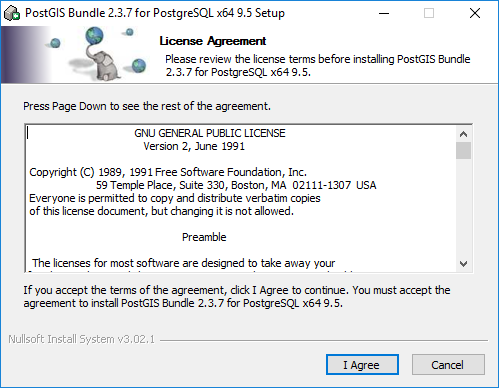
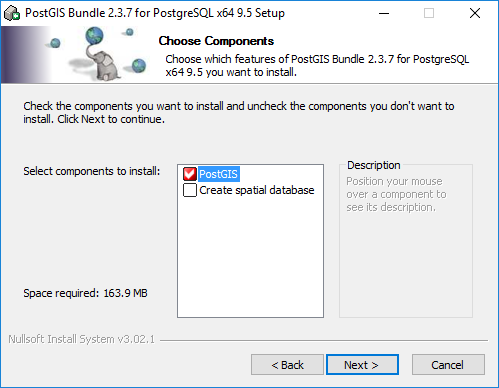
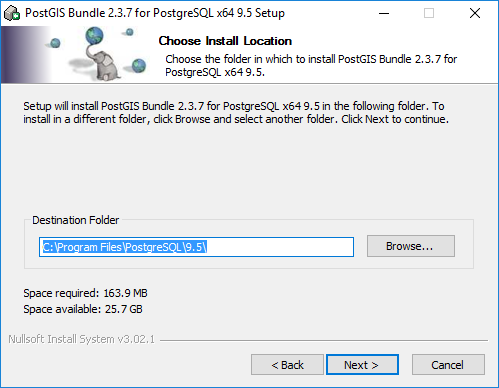
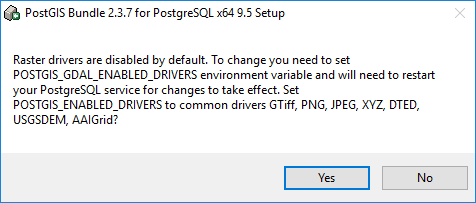
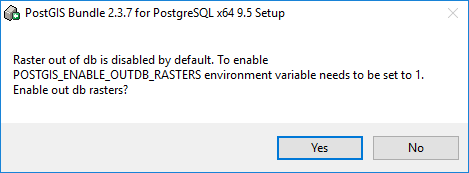
 Create a PostGIS database
Create a PostGIS database
First, you must ensure that the PostgreSQL database service has been started. And then create a PostgreSQL database by pgAdmin for managing PostGIS spatial data. The operations in detail are:
- Run pgAdmin. Right click "Databases" and select Create > Database...
- Specify a name, an owner, one kind of encoding types, etc. for the database you want to create.
- Click "Save" to finalize the creation.
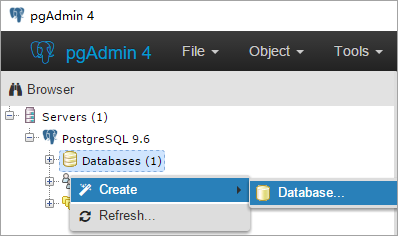 |
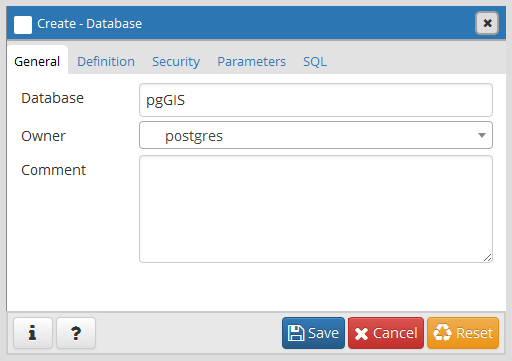 |
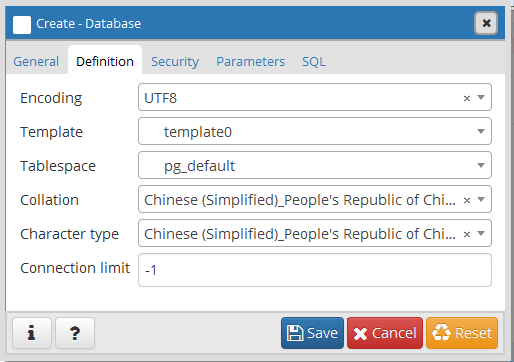 |
 SDX+ for PostGIS
SDX+ for PostGIS
SuperMap manages PostGIS spatial data in the PostgreSQL database through the engine "SDX+ for PostGIS" and all workings on maintaining tables in the PostgreSQL database are done by SDX+ for PostGIS.
Managements of PostGIS spatial data contain: create databases, create/remove datasources, create/remove datasets, add/remove records (geometry objects) add/remove fields into/from datasets, update filed values and data query, and so on.
- Create PostGIS datasources
- When you are creating PostGIS-based datasource with SuperMap iDesktop, you can specify either an existing database name or a new database name, and a corresponding PostgreSQL database is produced first and then the datasource is created. One PostgreSQL database can be used for creating only one PostGIS-based datasource.
- In the meanwhile, after creating the PostGIS-based datasource, there are series of system tables being added for datasource management.
- You are allowed to create or import a datasource into a PostGIS-based datasource. The dataset types supprted by the engine SDX+ for PostGIS contain: point, line, region, text, CAD, tabular, 3D point/line/region/model, EPS complex point/line/region/text, raster, image, mosaic datasets. Besides, if there is existed third-party data conforming to PostGIS spatial data structure in the specified database, the data also will be read and managed by the created PostGIS-based datasource.

Figure: the system table "geometry_columns" which is used for recording which tables have spatial information 
Figure: the system table "spatial_ref_sys" which is used for storing spatial coordinate system information based on the OGDC criterion. - Edit PostGIS spatial data
All kinds of edit operations are allowed by SDX+ for PostGIS:
- Add/remove geometry objects (points, lines, polygons, text).
- Editing geometry objects includes editing vertexes of objects, splitting objects, processing doughnut polygons and so on.
- Geometric object operations includes merging, intersecting and so on.
- PostGIS Spatial data display
- SDX+ for PostGIS allows to visualize PostGIS spatial data, that is you can configure styles, create various thematic maps based on PostGIS spatial data.
- All operations supported by the engine "SDX+ for PostGIS" to PostGIS spatial data are implemented by docking PostGIS functions (including geometry objection operations and raster data operations). At present, the PostGIS functions docked by SDX+ for PostGIS are sufficient for mapping and basic spatial analysis. If the function you need is out of the range, please refer to PostGIS manual: https://postgis.net/docs/manual-2.4/